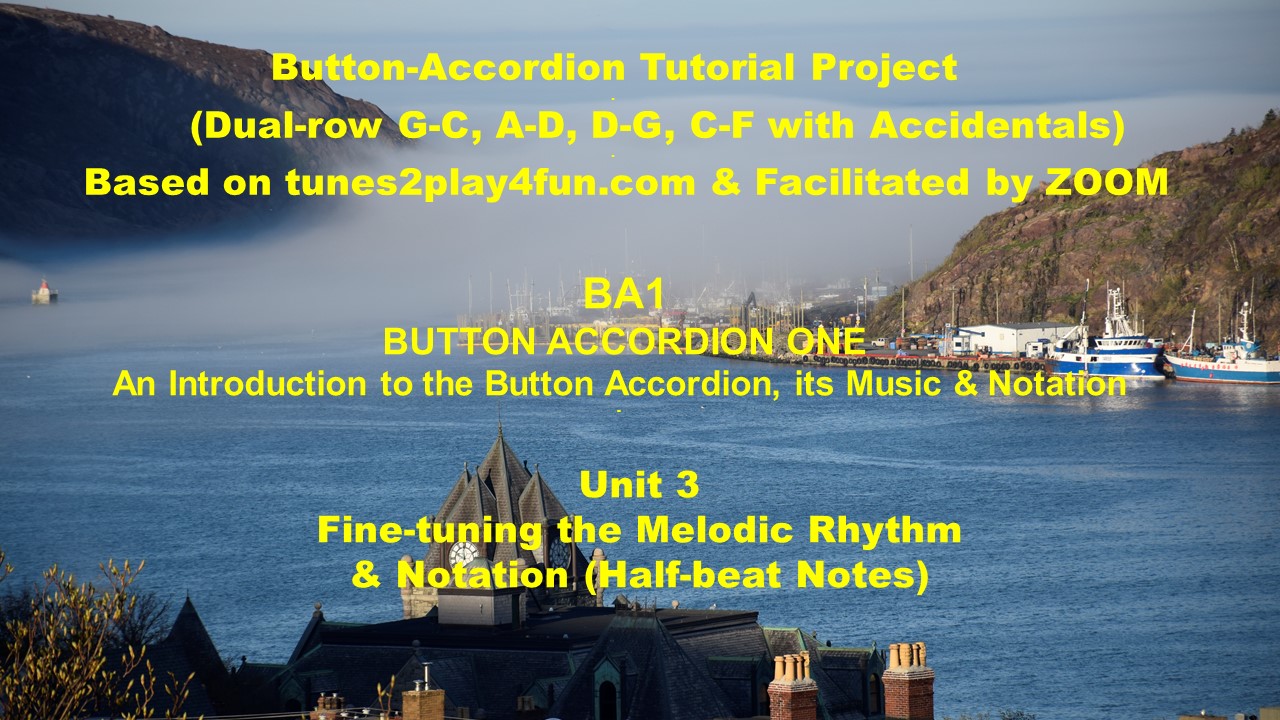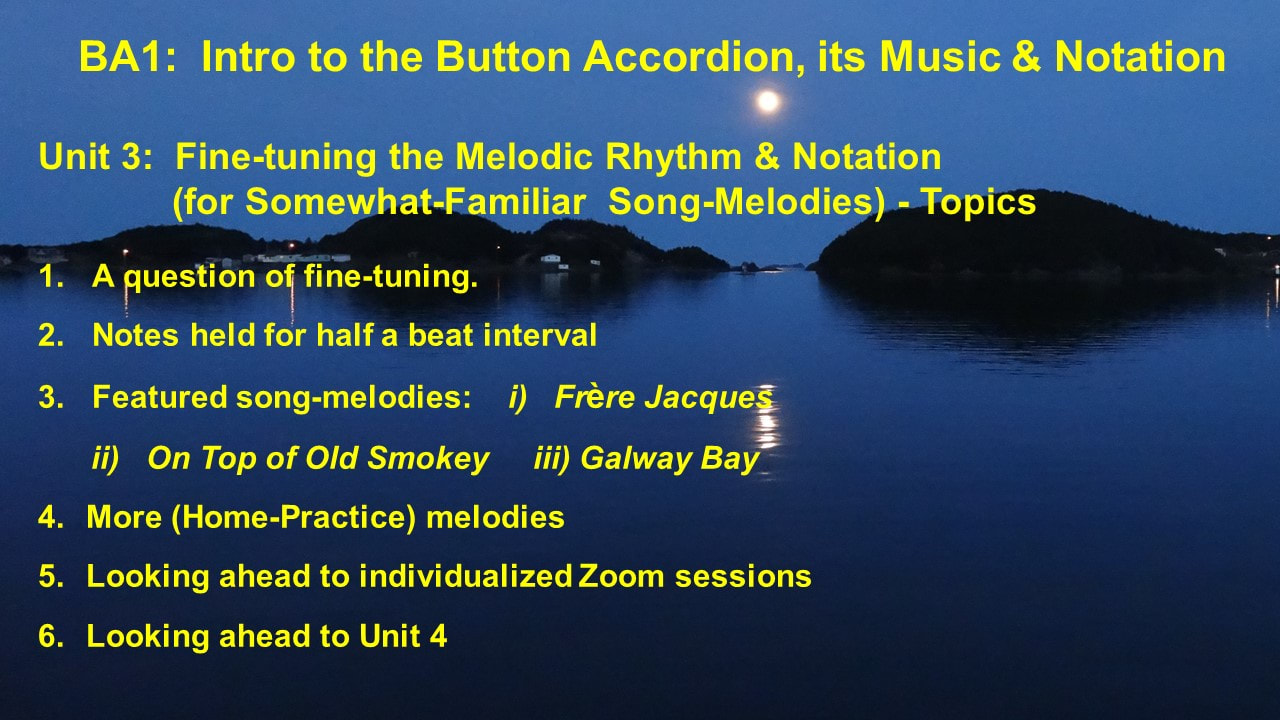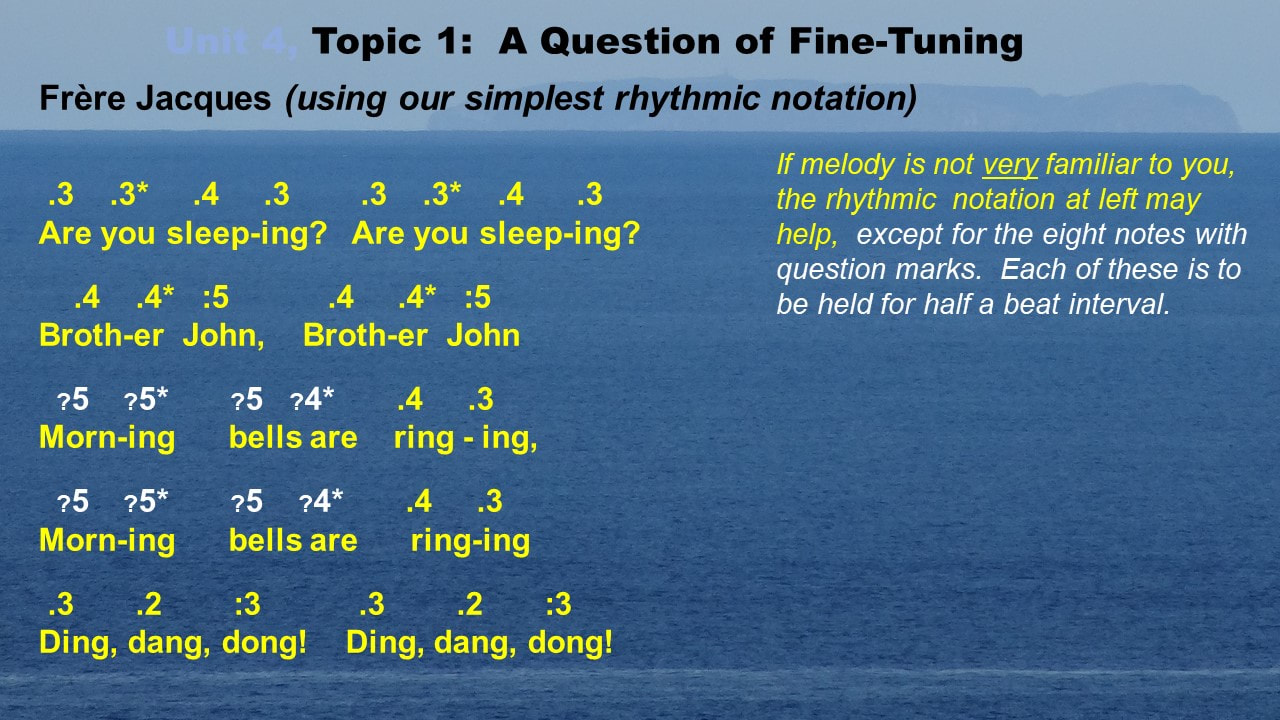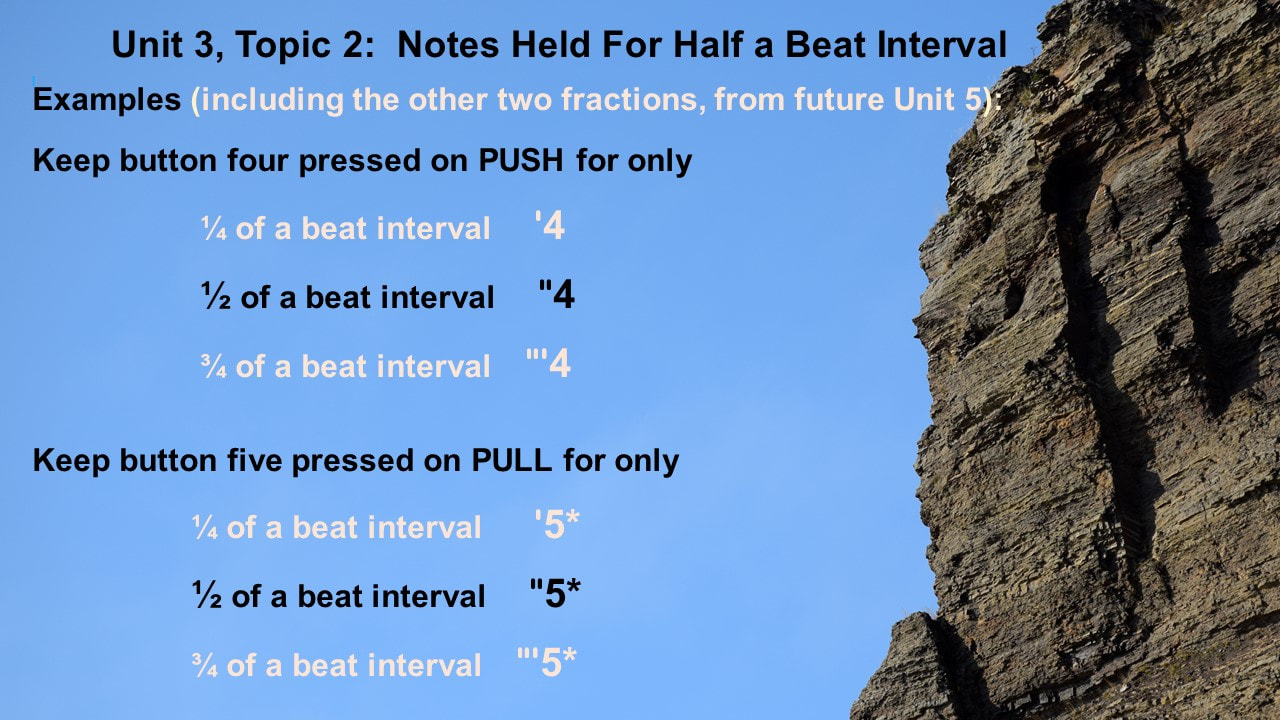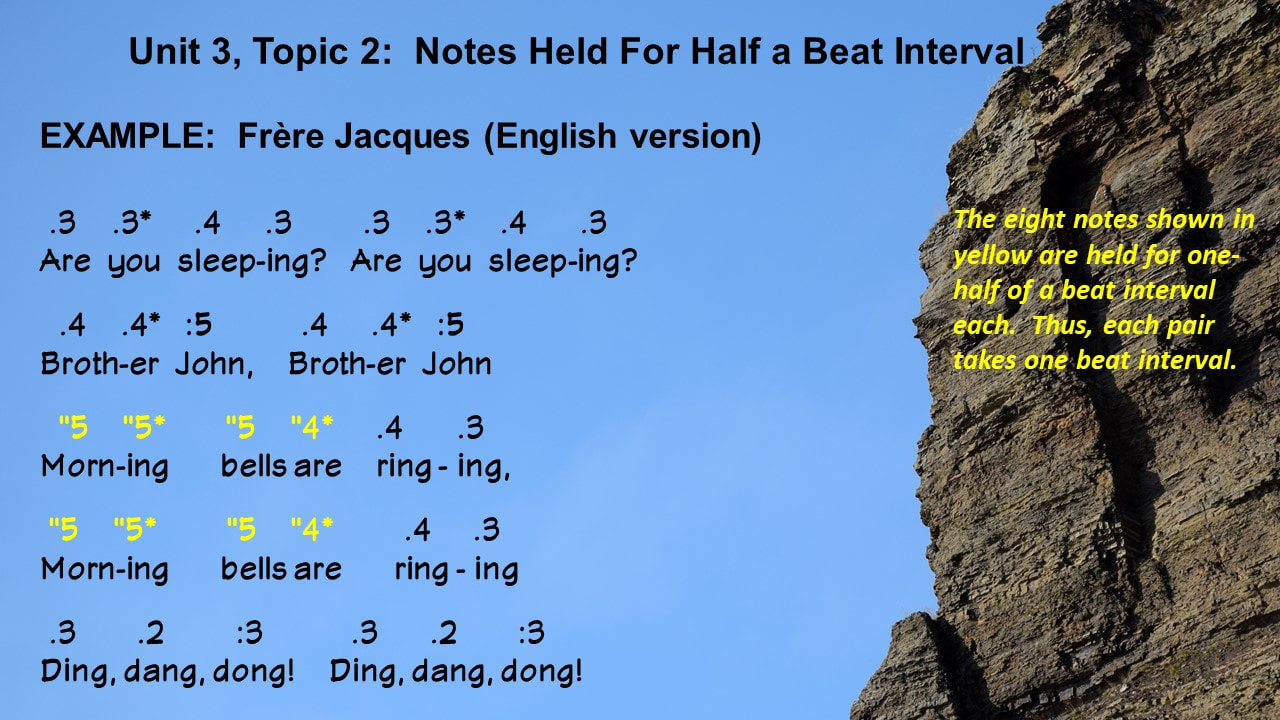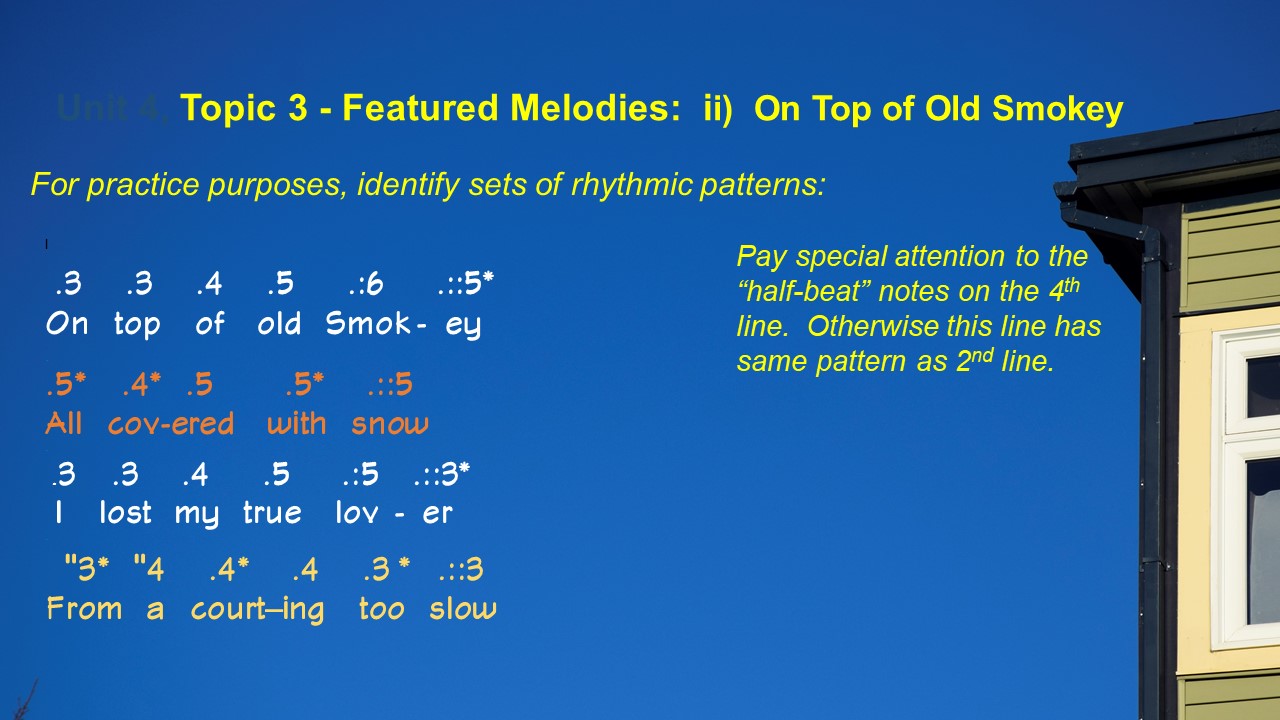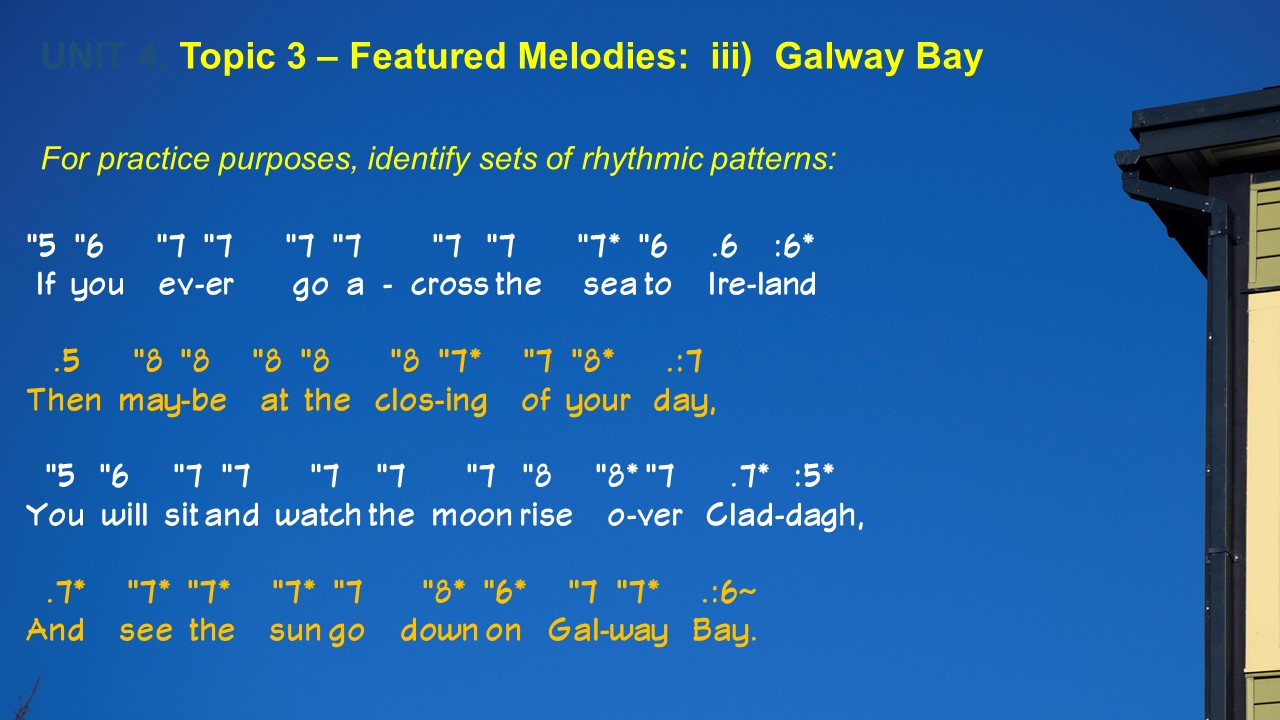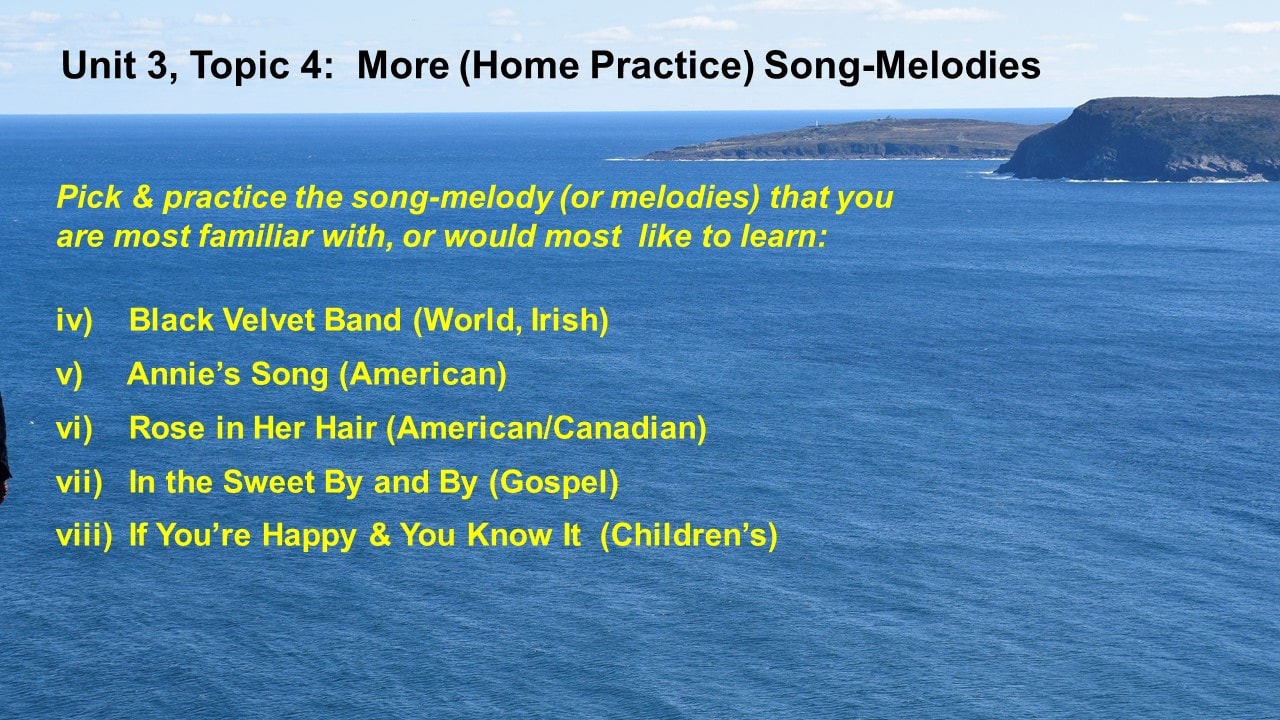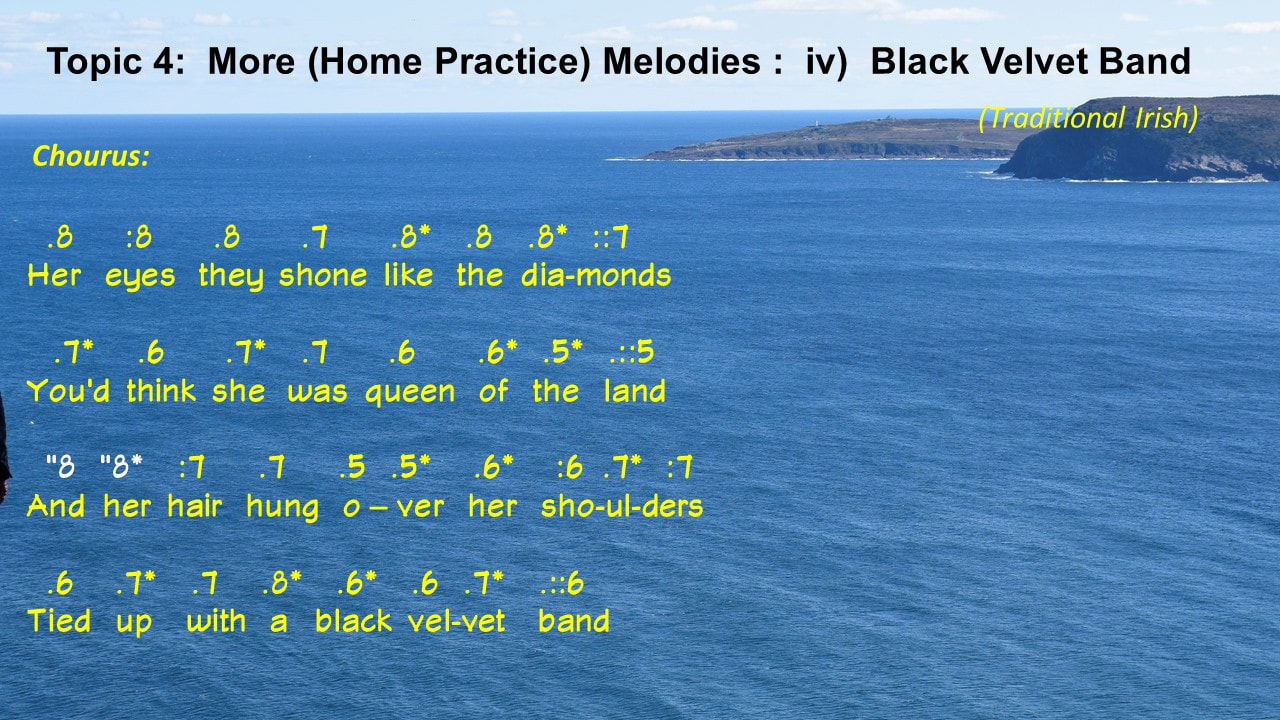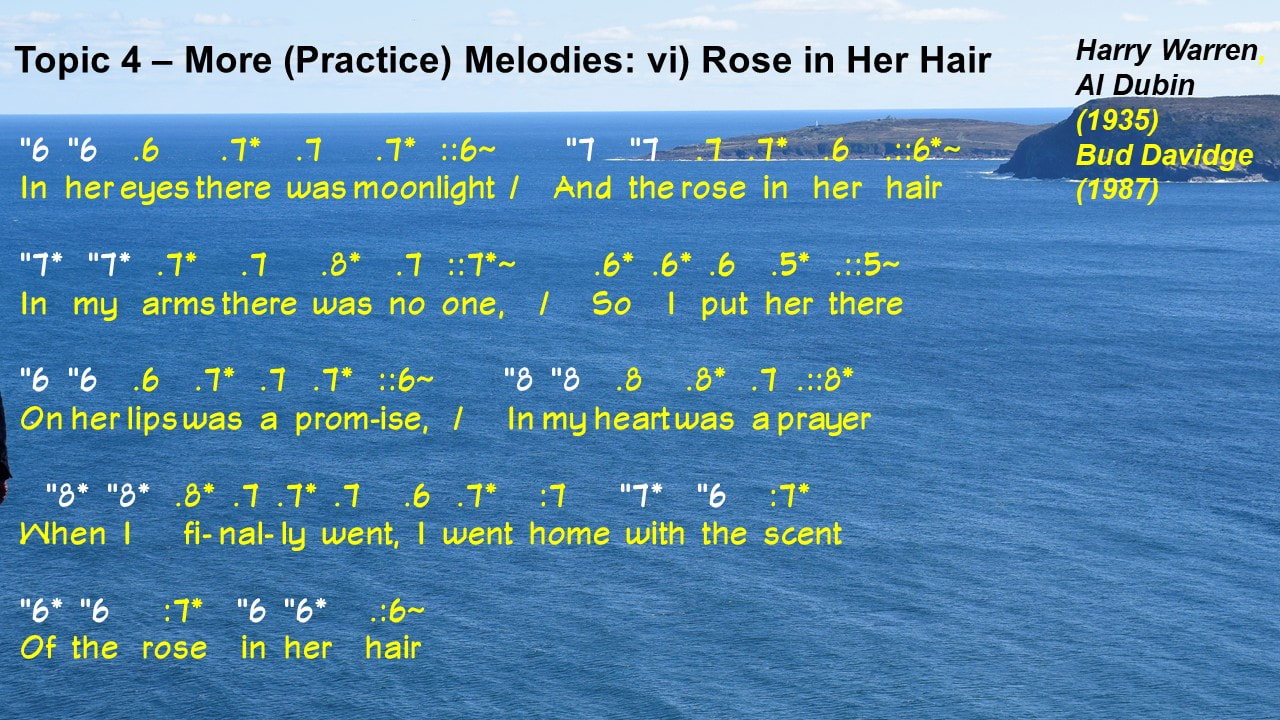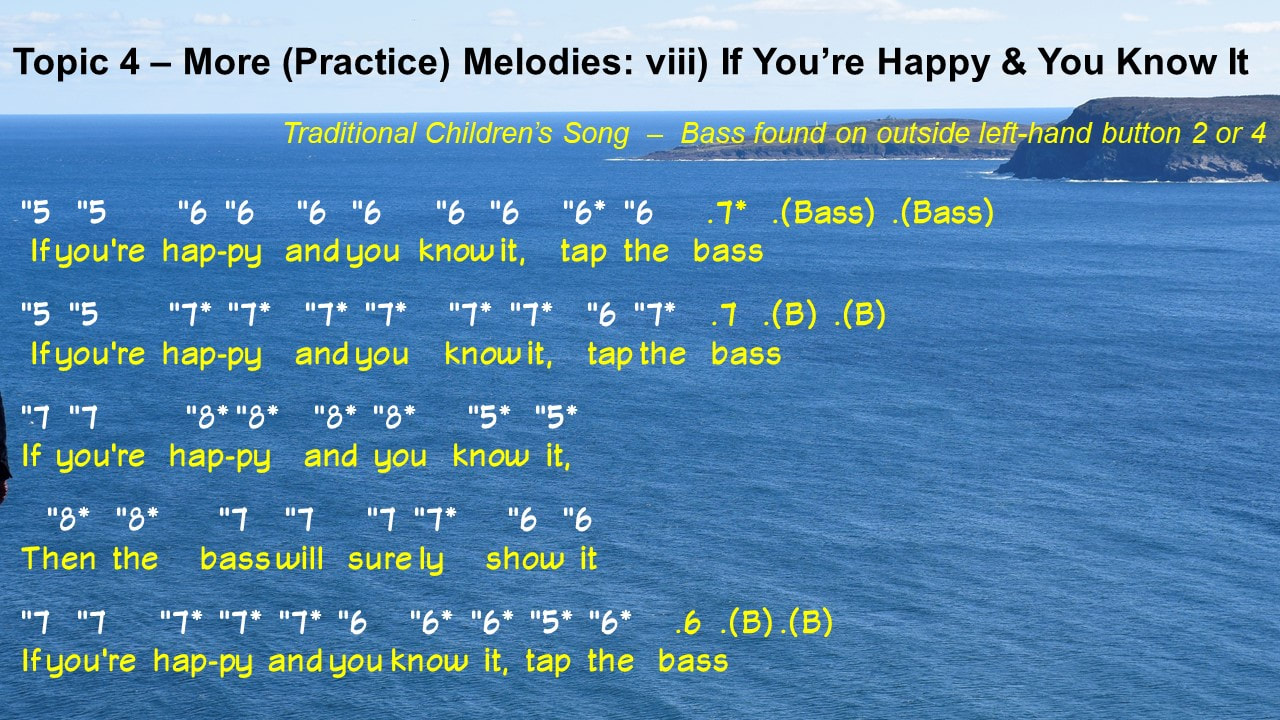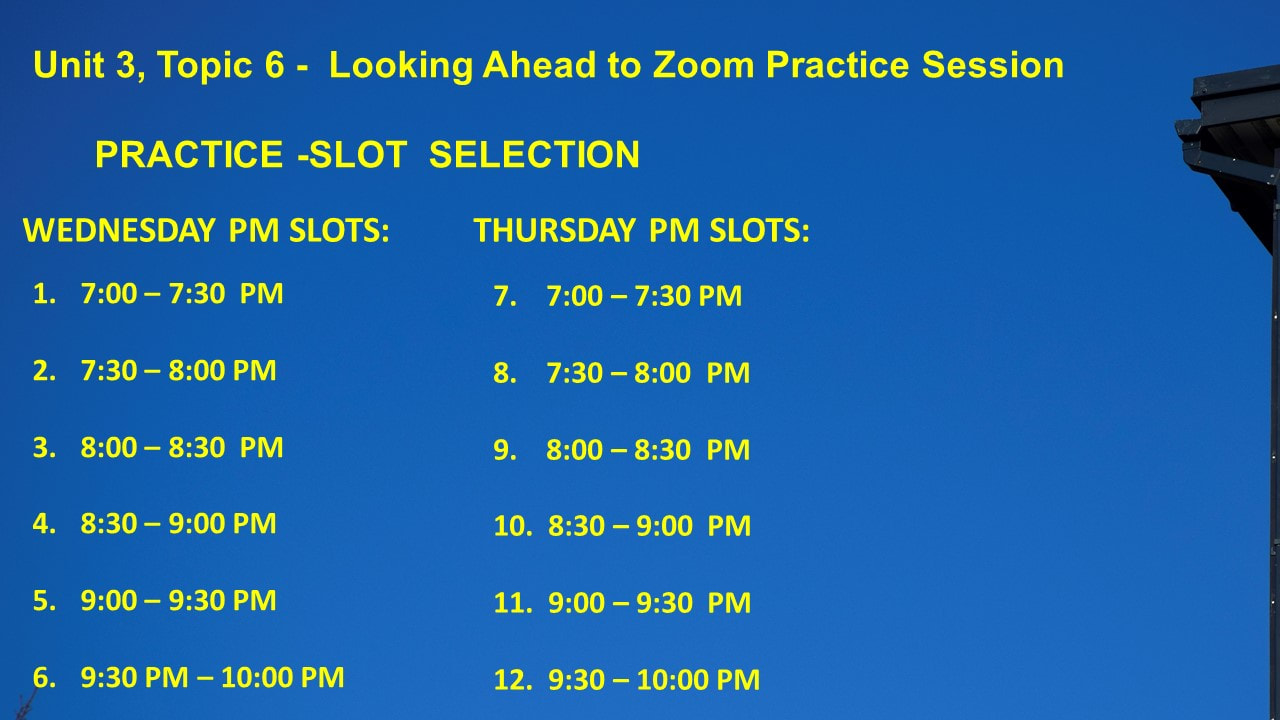Button-Accordion Project
(Dual-row G-C or A-D, with Accidentals)
Based on tunes2play4fun.com & Facilitated by ZOOM
MINI-COURSE BA1
Intro to the Button Accordion, its Music & Notation
UNIT THREE (of TEN)
Fine-Tuning Melodic Timing
(Half-beat Notes in Somewhat-Familiar Song-Melodies)
(Dual-row G-C or A-D, with Accidentals)
Based on tunes2play4fun.com & Facilitated by ZOOM
MINI-COURSE BA1
Intro to the Button Accordion, its Music & Notation
UNIT THREE (of TEN)
Fine-Tuning Melodic Timing
(Half-beat Notes in Somewhat-Familiar Song-Melodies)
SLIDES & COMMENTS
|
SLIDES 1 - 3
In Unit 1 we played melodies that were so familiar that only button numbers (push & pull) were given, and hardly needed. Unit 2 introduced musical time, and included a simple rhythmic notation for notes that were held for an integral number of beats. Welcome to Unit 3 and the first stage of fine-tuining. |
In this verse we have 32 button notes, of which 24 are each held for one or for two beat intervals.
However, this verse contains eight notes that are each held for half a beat interval (shown as white question marks above).
We will need a symbol that can indicate half a beat interval, and can be easily adapted to other fractions.
However, this verse contains eight notes that are each held for half a beat interval (shown as white question marks above).
We will need a symbol that can indicate half a beat interval, and can be easily adapted to other fractions.
|
SLIDE 9 - Topic 2
For the melodies in BA1 (and for a host of other melodies) three fractions are sufficient, at least for now. In this Unit we will focus on the fractional note that is held for 1/2 of a beat interval. Later, in Unit 5 we will make use of fractional notes held for 1/4 and 3/4 of a beat interval. |
At first glance this fractional notation may make the melody look much more complicated and difficult.
However, in the majority of cases, these notes are grouped in pairs with each pair covering a single beat interval.
Example: The pair "5 "5* at beginning of line 3 is held for a total of one beat interval.
And, of course, if it is a melody you know really well, you will probably play these fractional pairs in a single beat without even thinking about it.
However, in the majority of cases, these notes are grouped in pairs with each pair covering a single beat interval.
Example: The pair "5 "5* at beginning of line 3 is held for a total of one beat interval.
And, of course, if it is a melody you know really well, you will probably play these fractional pairs in a single beat without even thinking about it.
Just a Suggestion for beginners, new to the accordion: Practice each pattern on a line, until comfortable, before moving on to the next line..
Review the rhythmic patterns above.
Note the identical pattern in lines 1 & 3. Then, compare the melodic rhythms in lines 2 and 4, where the patterns are nearly identical.
Note the identical pattern in lines 1 & 3. Then, compare the melodic rhythms in lines 2 and 4, where the patterns are nearly identical.
The composer could have simplified the final line as "For court-ing too slow" and held the first note for one beat interval. Then the rhythmic patterns on the 2nd & 4th lines would have been identical. However, I sense that the way it is written above, with the half-beat notes, makes the melody rhythmically more interesting.
An Aside: Recognizing "pairs" will be useful when, in a future BA mini-course, we add bass-end beats to the melodies that contain fractional notes.
|
SLIDE 21
Black Velvet Band is a traditional Irish song that was popularized in the 1960s by Harry Hibbs, and has since been covered by a large number of performers. Notice the identical lyrical and rhythmic patterns in lines 2 and 4, and both the similarities and the differences between lines 1 and 3. |
|
SLIDE 22
This is the third verse of John Denver's Annie's Song. To check the rhythmic patterns, this is best viewed as an 8-line verse. At left, due to lack of space, the first four lines of the song are printed on two lines. For the first verse, return to the BA1-Unit 3 main page, and choose Annie's Song. |
THREE FURTHER OBSERVATIONS ON LONG NOTES AT END OF LINES (Annie's Song):
1. The tilde symbol ( ~ ) at the end of the lines means that the button note may be held even longer.
2. Singers frequently "rest" their voices for at least the last part of long musical notes at the end of lines, instead of holding the singing note the whole time.
3. If playing in a group, many accordion players will simply hold such notes, as suggested above; others may actually also "rest". Many players will choose to substitute embellishments or ornamentations to relieve the boredom of playing a long note beyond the singing (especially if performing "solo") - more about this later.
1. The tilde symbol ( ~ ) at the end of the lines means that the button note may be held even longer.
2. Singers frequently "rest" their voices for at least the last part of long musical notes at the end of lines, instead of holding the singing note the whole time.
3. If playing in a group, many accordion players will simply hold such notes, as suggested above; others may actually also "rest". Many players will choose to substitute embellishments or ornamentations to relieve the boredom of playing a long note beyond the singing (especially if performing "solo") - more about this later.
THE TILDE ( ~ ) SYMBOL (Rose in Her Hair):
A reminder that the tilde symbol ( ~ ) at the end of some lines above means that the button note should be held longer, which, for this song, is usually three extra beat intervals.
A reminder that the tilde symbol ( ~ ) at the end of some lines above means that the button note should be held longer, which, for this song, is usually three extra beat intervals.
